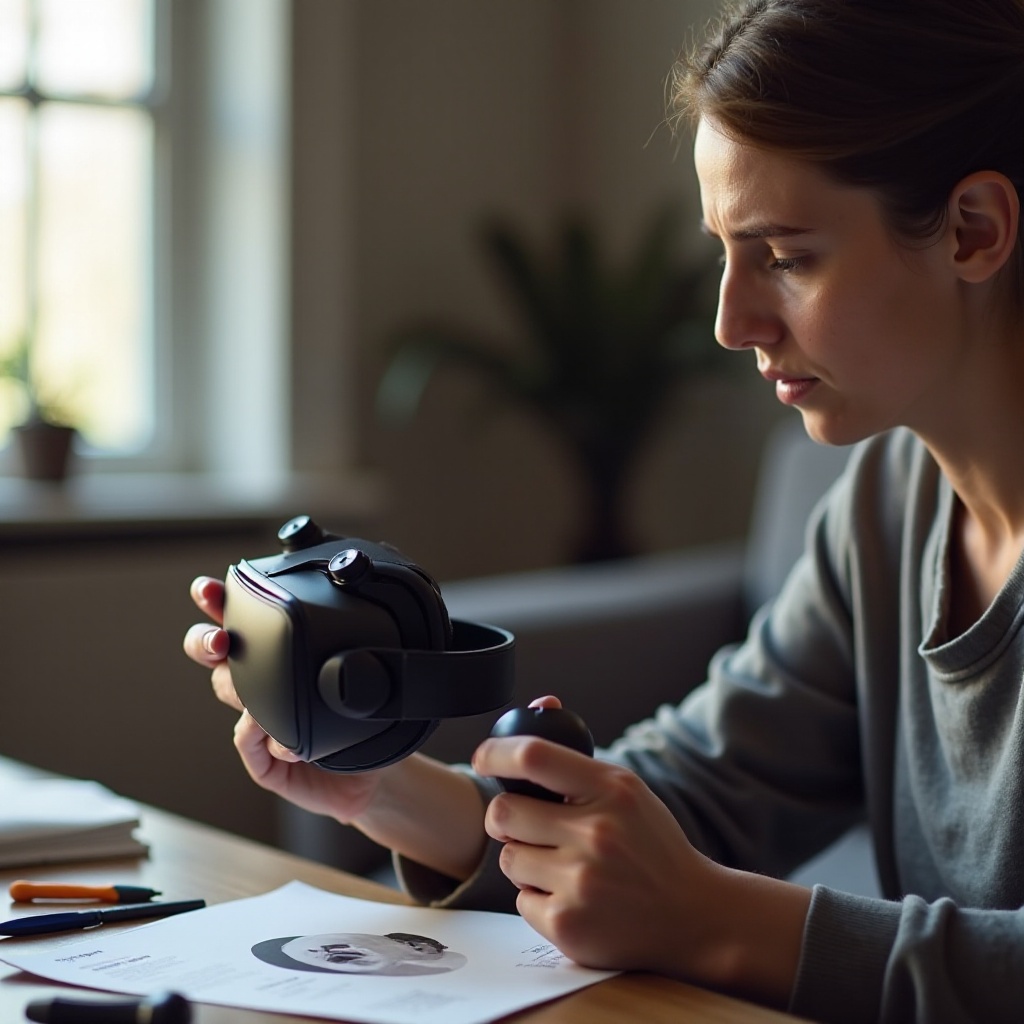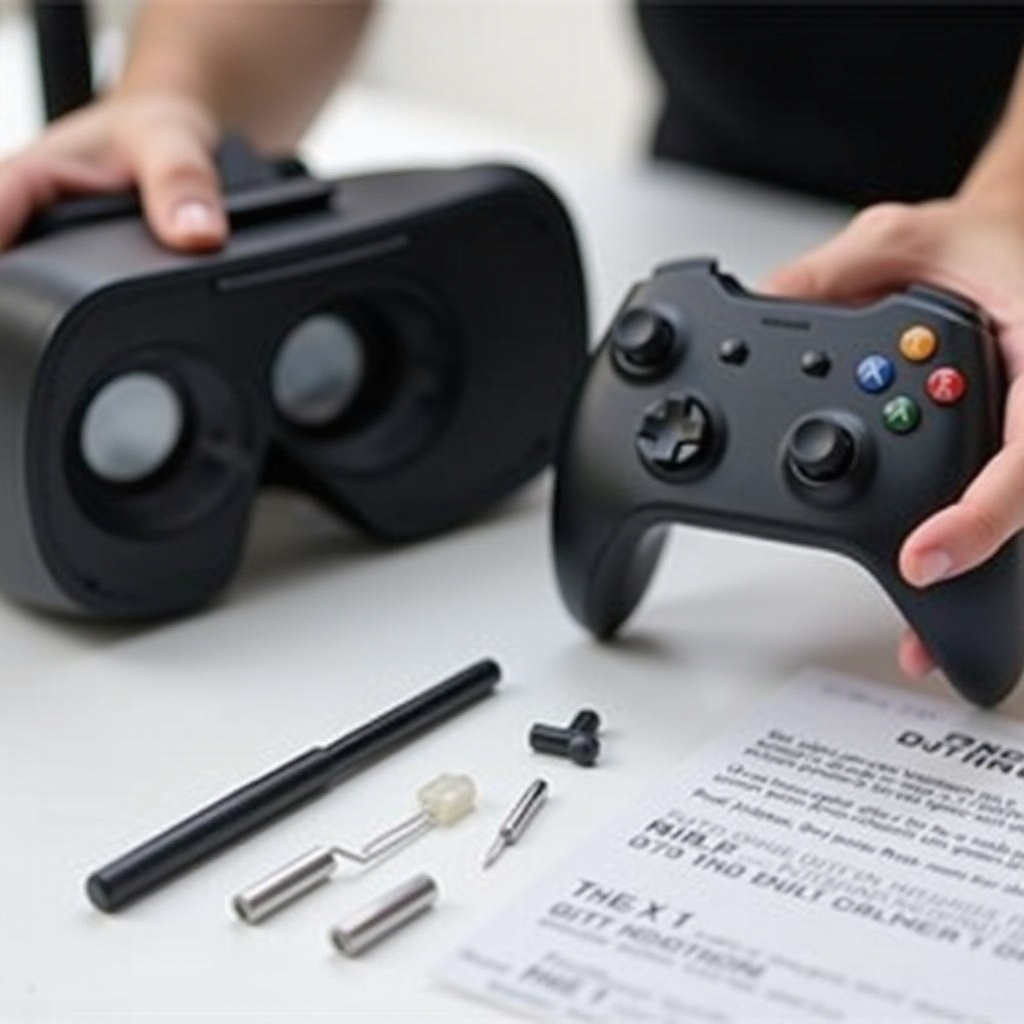Introduction
Headset drift controller issues can frustrate even the most patient gamers, especially when the screen seems to move on its own without any input. Such problems disrupt your gaming experience and can impact the overall performance of VR applications. Luckily, you can take steps to identify the cause and rectify it efficiently. This comprehensive guide will walk you through understanding, diagnosing, fixing, and preventing headset drift issues.

Understanding Headset Drift
Headset drift occurs when the cursor or the view in your virtual reality setup slowly and randomly moves across the screen without any input from you. This can severely impact your experience, making it hard to aim correctly in games or navigate applications effectively. Drift can result from multiple issues, including software glitches, sensor malfunctions, or outdated firmware. Recognizing the symptoms and understanding the potential causes are crucial for effective troubleshooting.
By identifying whether your issue is software or hardware-related, you can better determine how to address it. This section will delve into the potential reasons behind headset drift and provide insights into how these problems manifest during usage.
Diagnosing the Problem
Successfully diagnosing headset drift involves a clear understanding of the symptoms and possible causes. First, observe when the drift occurs. Is it consistent or sporadic? Does it happen in all applications or only specific ones?
- Software Issues: Check if your software is up to date. Outdated software can create compatibility issues that result in headset drift.
- Calibration: Ensure the headset and sensors are calibrated correctly. Misalignment in calibration settings can cause drift.
- Hardware Malfunction: Conduct a visual inspection of the hardware. Look for any signs of damage to the sensors or headset.
- Interference: Check for nearby electronic devices that could interfere with the headset’s sensors.
Once you pinpoint when and where the drift happens, you can better determine your approach to fixing it. If you’ve identified that software might be the culprit, the next section will guide you through software solutions.
Fixing Software-Related Drift
After diagnosing that the issue might be software-related, you can follow these steps to resolve it:
-
Update Firmware and Software: Always ensure your VR headset’s software and associated devices have the latest updates. Manufacturers often release patches that fix known bugs.
-
Re-Calibrate Your System: Calibration is crucial. Follow your headset manufacturer’s guidelines to recalibrate the sensors and ensure they correctly track movement.
-
Reset to Default Settings: Sometimes, software tweaks can cause instability. Reverting to default settings can resolve unforeseen conflicts.
-
Adjust Sensitivity Settings: Play around with sensitivity settings in the software. Sometimes a minor tweak can significantly improve performance.
-
Check for Software Interference: Ensure no background application uses significant resources that could influence the headset’s performance.
Resolving software issues involves updates, recalibration, and setting adjustments. If these steps don’t resolve your drift problem, the cause might be hardware-related, which we will address next.

Addressing Hardware Issues
If the software solutions don’t help, the drift problem may lie in the hardware. Pay close attention to these steps:
- Inspect the Headset and Sensors:
- Carefully examine the headset and sensors for any signs of damage.
-
Clean the lenses and sensors with a microfiber cloth to remove any dust or smudges.
-
Check Connections:
- Ensure all cables are securely connected.
-
If any appear damaged, consider replacing them.
-
Reposition Sensors:
- Make sure the sensors are correctly positioned. They should have a clear line of sight to the headset at all times.
-
Obstructions can lead to tracking issues and result in drift.
-
Replace Faulty Components:
- If you encounter consistent issues with specific sensors or parts, replacing them might be necessary.
- Contact the manufacturer’s customer service for recommendations on obtaining replacement parts.
By thoroughly managing hardware, you ensure all components function correctly and reduce the likelihood of experiencing drift due to physical wear and tear.
Prevention Tips to Avoid Future Drift Issues
Preventing future headset drift problems involves a combination of regular maintenance and optimal setup. Here are some tips:
- Regular Maintenance:
- Clean sensors and lenses regularly.
-
Inspect cables for damage periodically.
-
Software Management:
- Keep your VR headset and corresponding software up to date.
-
Perform recalibrations periodically to ensure optimal tracking.
-
Optimize Setup:
- Position your setup to avoid potential interference from other electronic devices.

Conclusion
Headset drift can be a significant annoyance, but by understanding the causes and applying the right fixes, you can effectively tackle the issue. From diagnosing whether it’s a software or hardware problem to performing the appropriate fixes, this guide helps you regain a seamless VR experience. Remember, preventive measures are equally vital in ensuring prolonged, smooth performance of your headset.
Frequently Asked Questions
What are the common symptoms of headset drift?
Common symptoms of headset drift include the view or cursor moving by itself without user input. You might notice consistent unintended movement in VR games or applications, making it hard to interact accurately.
Can software updates fix headset drift issues?
Yes, software updates can resolve headset drift issues. Developers often release patches and updates to fix bugs that might be causing drift. Always ensure your VR headset software and firmware are up to date.
When should I seek professional help for fixing my headset drift controller?
If you’ve tried all the troubleshooting steps for both software and hardware issues without success, it may be time to seek professional help. Professionals can diagnose deeper hardware issues or other problems that might not be apparent through standard troubleshooting methods. Contact customer service or look for authorized service centers for your VR headset.